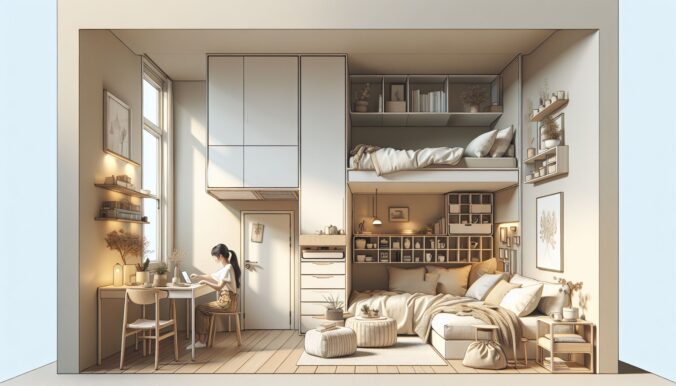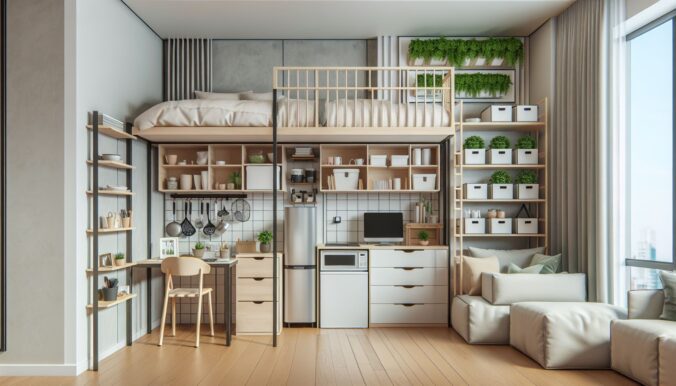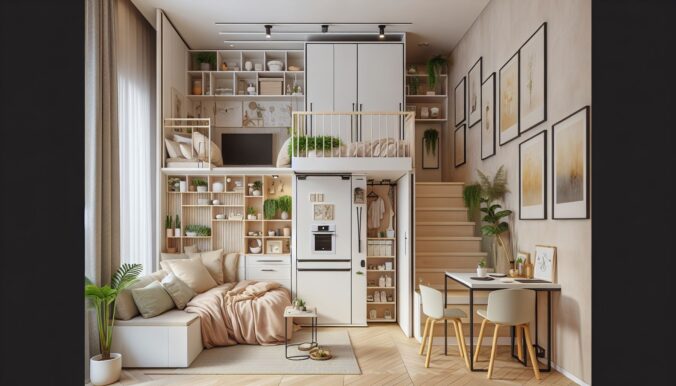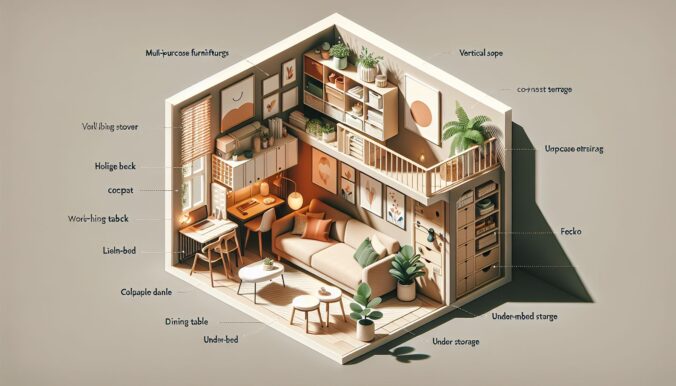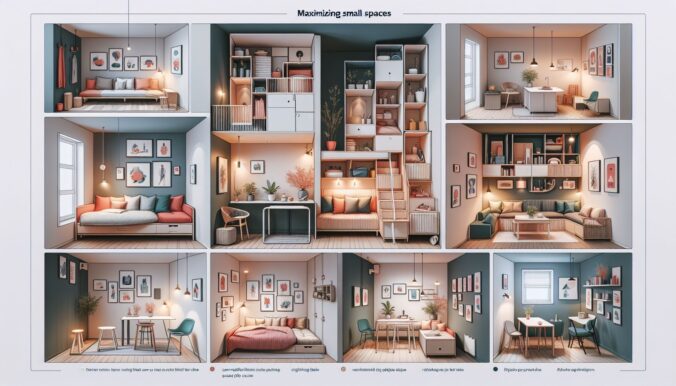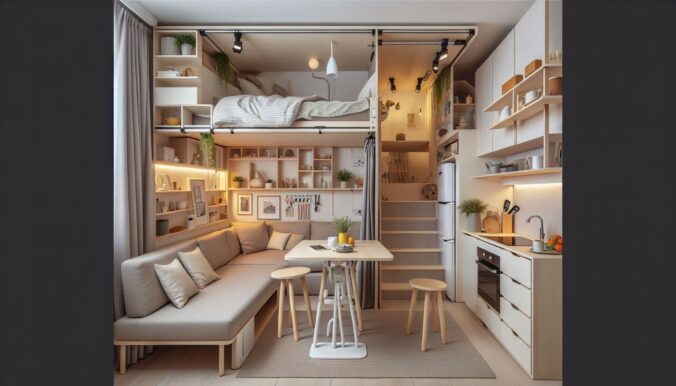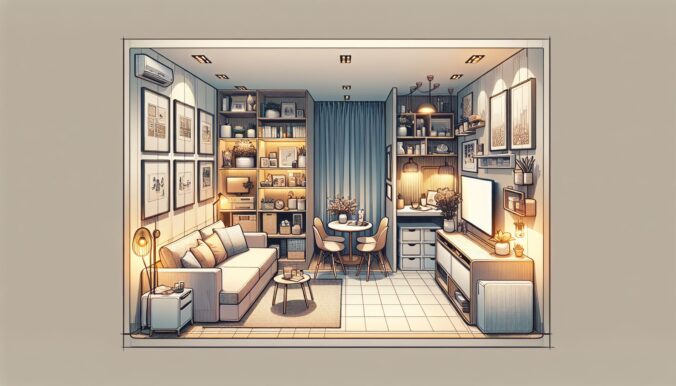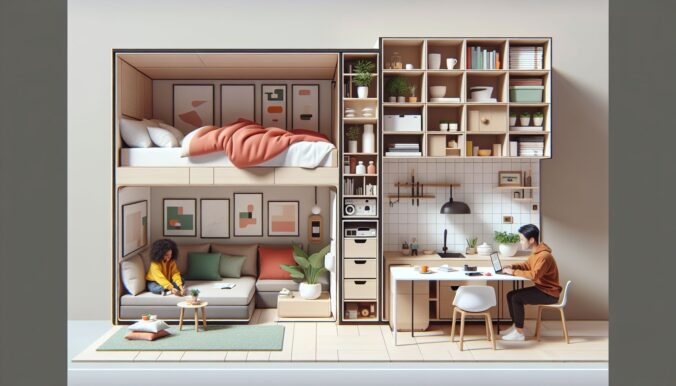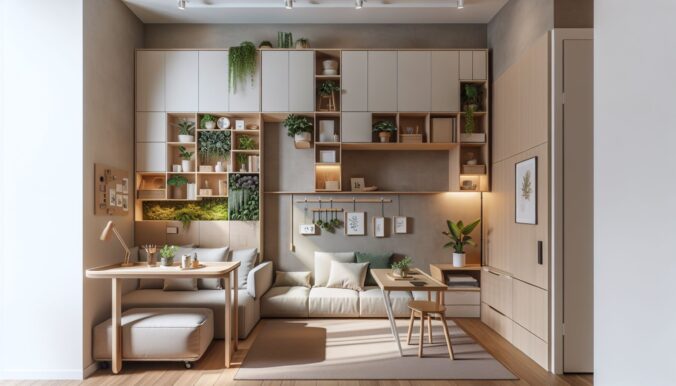In today’s world, many of us find ourselves living in smaller spaces – whether it’s a tiny apartment, a cozy studio, or a compact house. While small spaces can present some challenges when it comes to interior design, they also offer great opportunities for creativity and resourcefulness. By making the most of every square inch, you can transform even the tiniest of spaces into a stylish and functional oasis. In this blog post, we will explore some practical tips and strategies for maximizing small spaces, helping you create a home that is both beautiful and efficient.
Efficient Furniture Placement
One of the key principles of maximizing a small space is efficient furniture placement. When space is limited, every piece of furniture counts, so it’s important to choose wisely. Multi-functional furniture pieces, such as a sofa that converts into a bed or a coffee table with storage compartments, can be a great investment for small spaces. Additionally, placing furniture against walls and in corners can help open up the central area of a room, making it feel more spacious. Avoid blocking natural pathways and keep furniture proportionate to the size of the room to prevent it from feeling cramped.
Utilizing Vertical Space
Another effective way to maximize small spaces is by utilizing vertical space. Wall shelves, floating shelves, and tall bookcases are excellent storage solutions that can help you make the most of your wall space. By taking advantage of vertical space, you can free up floor space and create a sense of openness in your home. Consider installing shelves above doorways, using hanging organizers in closets, and incorporating tall furniture pieces to draw the eye upward and make the room appear larger.
Light and Bright Colors
In small spaces, light and bright colors can work wonders to create an airy and expansive feel. Opt for a neutral color palette with soft hues such as white, cream, light gray, or pastels to make the room feel more spacious. Light colors reflect natural light and can visually enlarge a room, while dark colors tend to absorb light and make a space feel more enclosed. To add depth and interest, consider incorporating pops of color through accessories, artwork, or accent walls, but keep the overall color scheme light and cohesive to maintain a sense of openness.
Strategic Lighting
Proper lighting is essential for maximizing a small space. Ample natural light can make a room feel brighter and more inviting, so be sure to keep window treatments minimal to let in as much light as possible. In areas where natural light is limited, strategically places lamps, sconces, and overhead lighting can help brighten the space and create a warm ambiance. Consider using LED bulbs to save energy and avoid overheating in small spaces. Dimmer switches can also be a great addition, allowing you to adjust the lighting according to your needs and mood.
Clever Storage Solutions
Effective storage is crucial in small spaces to keep clutter at bay and maintain a sense of order. Look for furniture pieces with built-in storage, such as ottomans with hidden compartments or beds with drawers underneath. Vertical storage solutions, such as pegboards, hooks, and hanging baskets, can help maximize wall space and keep frequently used items within reach. Declutter regularly and purge items that are no longer needed to make the most of your storage space. By staying organized and utilizing clever storage solutions, you can create a streamlined and functional living environment.
Reflective Surfaces
Mirrors, glass, and other reflective surfaces can work wonders in small spaces by creating the illusion of depth and brightness. Placing a large mirror opposite a window can help bounce natural light around the room and make it feel more open. Glass coffee tables, acrylic chairs, and mirrored furniture pieces can also add a touch of sophistication while visually expanding the space. Be mindful of what the reflective surfaces will be facing to avoid reflecting cluttered or unattractive areas, and strategically place them to enhance the overall design of the room.
Personal Touches and Greenery
While it’s important to prioritize functionality and efficiency in small spaces, don’t forget to infuse your personality and style into the design. Personal touches such as family photos, artwork, and sentimental objects can make a small space feel more like home. Incorporating greenery, such as potted plants, succulents, or fresh flowers, can also add life and warmth to a small space. Choose plants that thrive in indoor environments and consider vertical planters or hanging planters to save floor space. By adding personal touches and greenery, you can create a cozy and inviting atmosphere that reflects your unique tastes.
Conclusion
Maximizing a small space may require some creativity and strategic planning, but the results are well worth the effort. By utilizing efficient furniture placement, vertical space, light colors, strategic lighting, clever storage solutions, reflective surfaces, and personal touches, you can transform a small space into a stylish and functional oasis. Whether you’re living in a tiny apartment or a compact house, these practical tips and strategies can help you make the most of your space and create a home that is both beautiful and efficient. With a little ingenuity and attention to detail, you can maximize every square inch and enjoy a cozy, organized, and inviting living environment.
